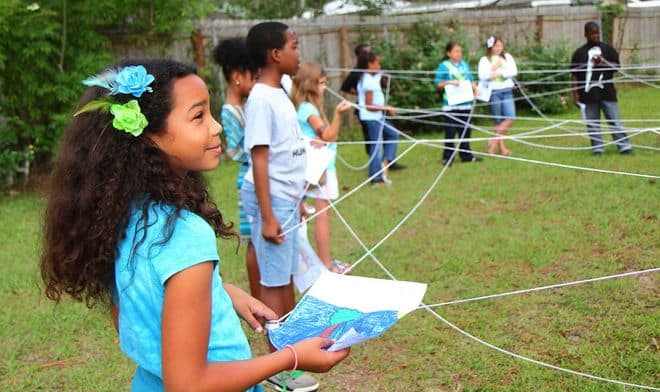On October 24th, U.S. Food Day, the organization Center for Science in the Public Interest (CSPI) is bringing attention to four key areas in which food system change needs to begin: in food education, food and health, schools, and college campuses. Throughout the week leading up to Food Day, Food Tank will recognize ways in which American youth – from young children to young adults – are shaking up the food system.
Students in Jacksonville, Florida have been reaping the benefits of an education program that focuses on ecosystem health and environmental conservation, designed by the international nonprofit organization, the Rainforest Alliance.
The education program, however, is not restricted to environmental science. All Rainforest Alliance lesson plans are interdisciplinary, teaching reading comprehension, math, social studies, and science through the lens of environmental conservation and sustainability.
“It’s education with the environment providing context and greater relevancy to learning,” says Courtney White, the Rainforest Alliance’s Director of Education. “People tend to pigeonhole environmental science into one discipline, when really, in our everyday life, we’re regularly engaged in environmental decision-making in many different ways. By looking across all the disciplines, we’re looking at a variety of different challenges—and how kids can be involved in the solutions.”
In 2002, Rainforest Alliance collaborated with Antioch University in Keene, New Hampshire to develop a series of curricula for students from kindergarten through fifth grade. Since then, the program has expanded to include early childhood and climate change curriculums, which were developed in partnership with Project Learning Tree.
The Rainforest Alliance’s curricula have been formally implemented in Jacksonville’s Duval County School District and are also available online to any school, at no cost.
The program is oriented around three core themes:
- Local-to-global learning: The Rainforest Alliance enables its students to develop an understanding of how anything that affects the global commons – whether it’s socially, economically, or environmentally – also affects the student’s own community. “It’s a way of understanding other places in relation to home,” says White.
- Sustainable practices: Each grade level works on a specific project from another country that is related to sustainable practices and participating in the Rainforest Alliance’s certification program. White explains how this helps students make connections: “As students learn more about other places, other people, and the sustainable practices, they reflect back on their own home and [ask themselves]: ‘What sustainable practices are happening in my area, in my neighborhood, in my community, and what can I do to make a difference?’”
- Civic engagement: As part of its professional development program, the Rainforest Alliance works with schools to develop local action projects. These projects often take the form of school gardens, but have also included community cleanup initiatives and the implementation of rain barrels to deal with water shortages.
White describes the teaching methods as “very concrete, hands-on, and highly engaging.” For example, in one 5th grade activity that teaches students the importance of biodiversity in an ecosystem, each student chooses a plant or animal and learns its characteristics. Then, all of the students sit in a circle together, holding a string, and each feels the tug of the string caused by a student representing that plant or animal “falling out” of the ecosystem’s web of life.
“They quickly learn how the health of all species is important to the health of a system as a whole,” White adds. “Children relate to home – thinking about home, and feeling protected and safe in the home, and [then they relate that] to the habitats of these species. Many of our case studies are about keeping habitats intact, and adopting practices that encourage sustainability and promote biodiversity. The students [gain an understanding of] how there are ways to produce things and make decisions that are more socially responsible.”
There is also a focus on how food choices affect the environment. As part of a lesson on the sustainability of cacao farming, children explore the question: What would Halloween be like without the Ecuadorian rainforest? Students also learn which foods grow naturally in their own region, and why choosing locally grown produce is often the more environmentally sustainable option.
Rainforest Alliance reports early findings from a third party evaluation that indicate promising results: students in its program scored higher than control groups in 60 percent of target reading comprehension areas, and 100 percent of science achievement indicators, with low-income schools particularly outperforming the control schools.
But the benefits go beyond just test scores. “It’s a lot about…understanding how to be compassionate about people in other places, [and] how to make good choices that help our environment,” explains Shannon Harter, a fourth-grade teacher in Duval County.
When it comes to creating a healthier planet, White says it is an imperative that teachers work hand-in-hand with the next generation on relevant topics and action opportunities. “Children just get the need for sustainable practices so much faster than adults do,” she says.













